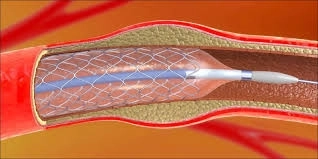
What’s the Difference Between Balloon Angioplasty and Stent Placement?
Published on: 2025-06-25 | Written by: Dr. Ayman Raafat Al-Shabaki, Consultant Vascular
Dr. Ayman Refaat El-Shabaky, Consultant of Vascular Surgery and Diabetic Foot, has extensive experience in diagnosing and treating peripheral artery disease using the latest minimally invasive techniques like balloon angioplasty and stent placement. He is committed to selecting the most appropriate procedure for each patient to ensure the best outcomes with minimal intervention.
First: What Is Balloon Angioplasty?
Balloon angioplasty is a simple, non-surgical procedure used to open narrowed or blocked arteries and restore blood flow.
How is it performed?
-
A thin catheter with a small balloon at its tip is inserted into the blocked artery.
-
The balloon is gently inflated to widen the narrowed area.
-
The balloon is then deflated and removed, leaving the artery open.
Dr. Ayman Refaat El-Shabaky often recommends this procedure for mild to moderate blockages, especially when the artery is not expected to re-narrow quickly after dilation.
Second: What Is a Stent?
A stent is a small metallic mesh tube that is placed inside the artery after it has been widened to help keep it open permanently.
How does it work?
-
First, the artery is dilated using a balloon.
-
Then, the stent is inserted and positioned at the blockage site.
-
The stent stays in the artery for life, supporting the vessel wall.
Dr. Ayman Refaat El-Shabaky explains that stent placement is crucial in cases where arteries are at high risk of re-narrowing, or in patients with significant risk factors like diabetes or smoking.
Quick Comparison: Balloon vs. Stent
| Feature | Balloon Only | Stent Placement |
|---|---|---|
| Mechanism | Temporary artery widening | Permanent support inside the artery |
| Remains in the body | Nothing remains | Stent stays permanently |
| Risk of re-narrowing | Relatively higher | Much lower due to stent support |
| Cost | Lower | Relatively higher |
| Best suited for | Mild or temporary blockages | Severe or high-risk blockages |
How Does the Doctor Decide?
Several factors influence the choice of procedure:
-
Severity and location of the blockage
-
Length of the narrowed segment
-
Presence of chronic diseases
-
Overall health status of the patient
Dr. Ayman Refaat El-Shabaky always performs duplex scans or CT angiography before deciding on the intervention, ensuring the best and safest outcome tailored to the patient’s condition.
After the Procedure: Patient Advice
-
Quit smoking immediately.
-
Take prescribed medications regularly, especially blood thinners.
-
Follow a heart-healthy, low-fat diet.
-
Engage in regular physical activity.
-
Schedule regular follow-ups with Dr. Ayman Refaat El-Shabaky to monitor the artery and any stent placement.
When Should You See a Doctor?
-
If you feel pain or numbness in your legs when walking.
-
If your limbs feel cold or change color.
-
If you have a history of diabetes or high cholesterol.
Early consultation with Dr. Ayman Refaat El-Shabaky can prevent serious complications and help avoid major surgeries in the future.

